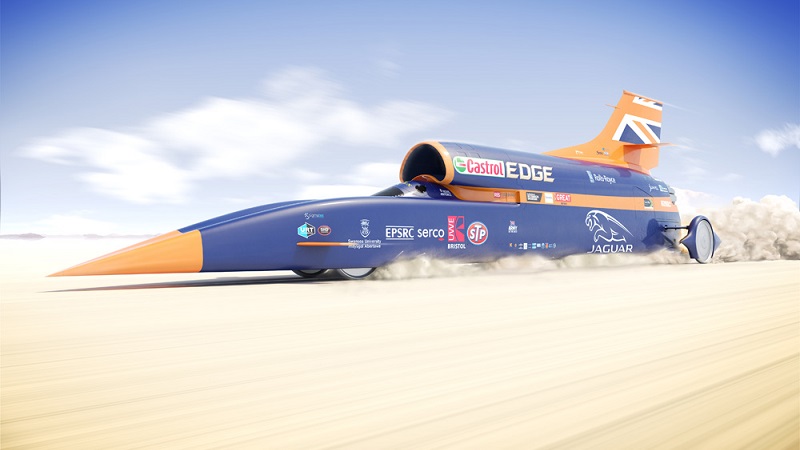The Bloodhound Supersonic car will attempt to break the world land speed record next year, by blasting through Hakskeenpan in the Northern Cape at a speed of 1 600km/h.
So, given the headline that enticed you to click on this story, you may wonder what that record attempt has to do with a marine antenna?
Well, South African-based antenna manufacturer Poynting recently unveiled the Omni 291 – its first antenna that has specifically been designed for use in coastal regions and in open-water.
The antenna’s ultra-wide band covers all contemporary LTE operating frequencies, which means that users have internet access no matter where they are in the world – within certain limits of course. But, as long as they don’t venture beyond the far horizon, they should be safe.
It also covers the 450 MHz LTE frequency. The technology behind it is a new antenna configuration, which uses multiple dipoles and a unique (patented) feed network.
Bloodhound SSC
This is where the Bloodhound Supersonic car comes in. The team that developed the new Omni 291 is the same South African team that is responsible for the antenna that will be fitted to the Bloodhound SSC’s tail – and it’s just as unique.
“Because it [the record attempt] is done in South Africa, the British team felt that they want to source as much as they can from South Africa and its technology,” Andre Fourie, Executive Chairman and Product Specialist for Poynting told htxt.africa.
“So they approached MTN to do the base station, which is the LTE base station for doing the video feeds. And they approached us, asking if we can to the antenna for the vehicle [in terms of live video and telemetry].”
The company wasn’t too keen at first, but after a nudge from the engineers, it took to the challenge.
“At that time, I wasn’t that interested because, [Bloodhound SSC] wasn’t willing to pay for it, and ultimately, my engineers said that they would be keen in getting involved,” Fourie said.
The antenna that will be fitted into the tail fin of the Bloodhound is the first water-cooled antenna that the team had to design, due to the fact that the heat generated from travelling at over 1 000km/h is incredibly high.
“This is a specialised [antenna], in the sense that it needs to cope with a lot of heat and a lot of mechanical vibrations.”
Heat and vibration
Although it will be in the tail fin of the car, it will be incredibly close to the rocket engines that propel the car forward.
“The heat from the engines are so intense that we had to design a water cooled system. The antenna is embedded in plastic, that sort of sits on the surface of the tail fin,” said Fourie. “But in order to not have any aerodynamic effects, we filled it all with plastic – but then the guys told me that the plastic will melt. So they had to water-cool the plastic.”
But if the Bloodhound is going at supersonic speeds, how does Poynting stay in contact with the car?
Well, that is where Pythagoras comes in.
“LTE is technically certified to only work up to 200km/h. And the way in which they handle it for the Bloodhound project, is that they put the base station 17km from the track and the car start about 2km from your right-hand side,” said Fourie. “And using the car running at 90-degree of the antenna, limits the relative speed of the car to the antenna. So at its highest speed it is almost perpendicular, so there is no change in speed – which relative to the distance is about 250km/h.”
Most people will just see the car whizz by in video reports, but one really has to pause for a moment just to appreciate the amazing technology that goes into the making the car tick over.
Since the car will be made up of mostly South African technology, it is a mechanical breakthrough that everybody should celebrate.
Ever since South Africa was picked to host a land speed world record, everybody in the office has been fairly excited to witness the Bloodhound car in action.
Originally slated for 2015, the land speed record attempt was pushed back to this year, and then, due to a number of financial issues it was shifted once again.
However, the company behind the supersonic car announced in the beginning of this month that it has secured the necessary funding that will allow it attempt the record in October 2017.

